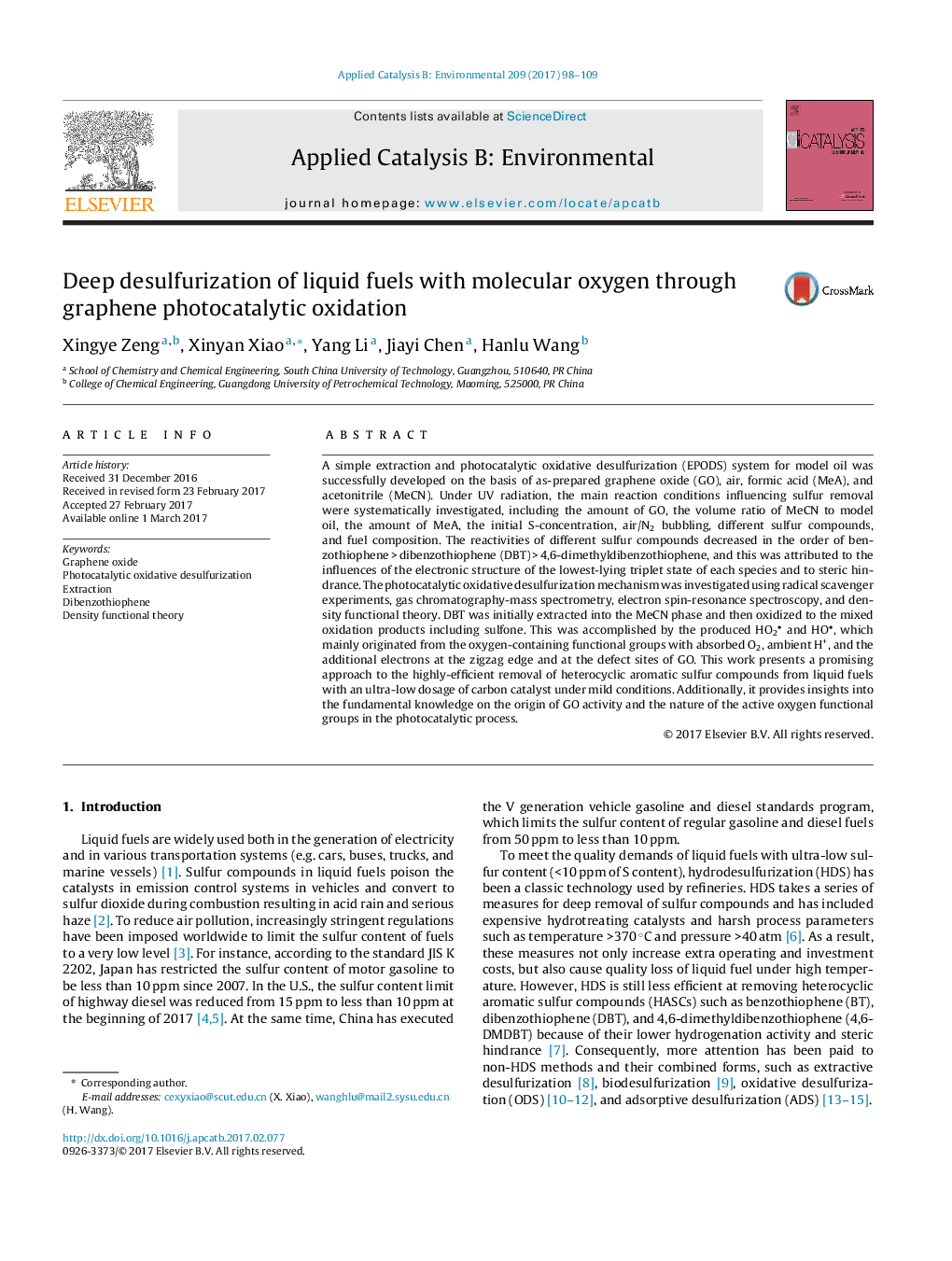| کد مقاله | کد نشریه | سال انتشار | مقاله انگلیسی | نسخه تمام متن |
|---|---|---|---|---|
| 6454134 | 1418811 | 2017 | 12 صفحه PDF | دانلود رایگان |
• A sample EPODS system was developed for model oil under moderate conditions.
• GO has excellent photocatalytic activity with an ultra-low catalyst dosage.
• HO2 and HO mainly originated from the zigzag edge and the defect sites of GO.
• HO2 and HO were in charge of the oxidation of DBT.
• Reactivities of HASCs were dominated by the electronic structures of the T1 states.
A simple extraction and photocatalytic oxidative desulfurization (EPODS) system for model oil was successfully developed on the basis of as-prepared graphene oxide (GO), air, formic acid (MeA), and acetonitrile (MeCN). Under UV radiation, the main reaction conditions influencing sulfur removal were systematically investigated, including the amount of GO, the volume ratio of MeCN to model oil, the amount of MeA, the initial S-concentration, air/N2 bubbling, different sulfur compounds, and fuel composition. The reactivities of different sulfur compounds decreased in the order of benzothiophene > dibenzothiophene (DBT) > 4,6-dimethyldibenzothiophene, and this was attributed to the influences of the electronic structure of the lowest-lying triplet state of each species and to steric hindrance. The photocatalytic oxidative desulfurization mechanism was investigated using radical scavenger experiments, gas chromatography-mass spectrometry, electron spin-resonance spectroscopy, and density functional theory. DBT was initially extracted into the MeCN phase and then oxidized to the mixed oxidation products including sulfone. This was accomplished by the produced HO2 and HO, which mainly originated from the oxygen-containing functional groups with absorbed O2, ambient H+, and the additional electrons at the zigzag edge and at the defect sites of GO. This work presents a promising approach to the highly-efficient removal of heterocyclic aromatic sulfur compounds from liquid fuels with an ultra-low dosage of carbon catalyst under mild conditions. Additionally, it provides insights into the fundamental knowledge on the origin of GO activity and the nature of the active oxygen functional groups in the photocatalytic process.
Figure optionsDownload high-quality image (145 K)Download as PowerPoint slide
Journal: Applied Catalysis B: Environmental - Volume 209, 15 July 2017, Pages 98–109
